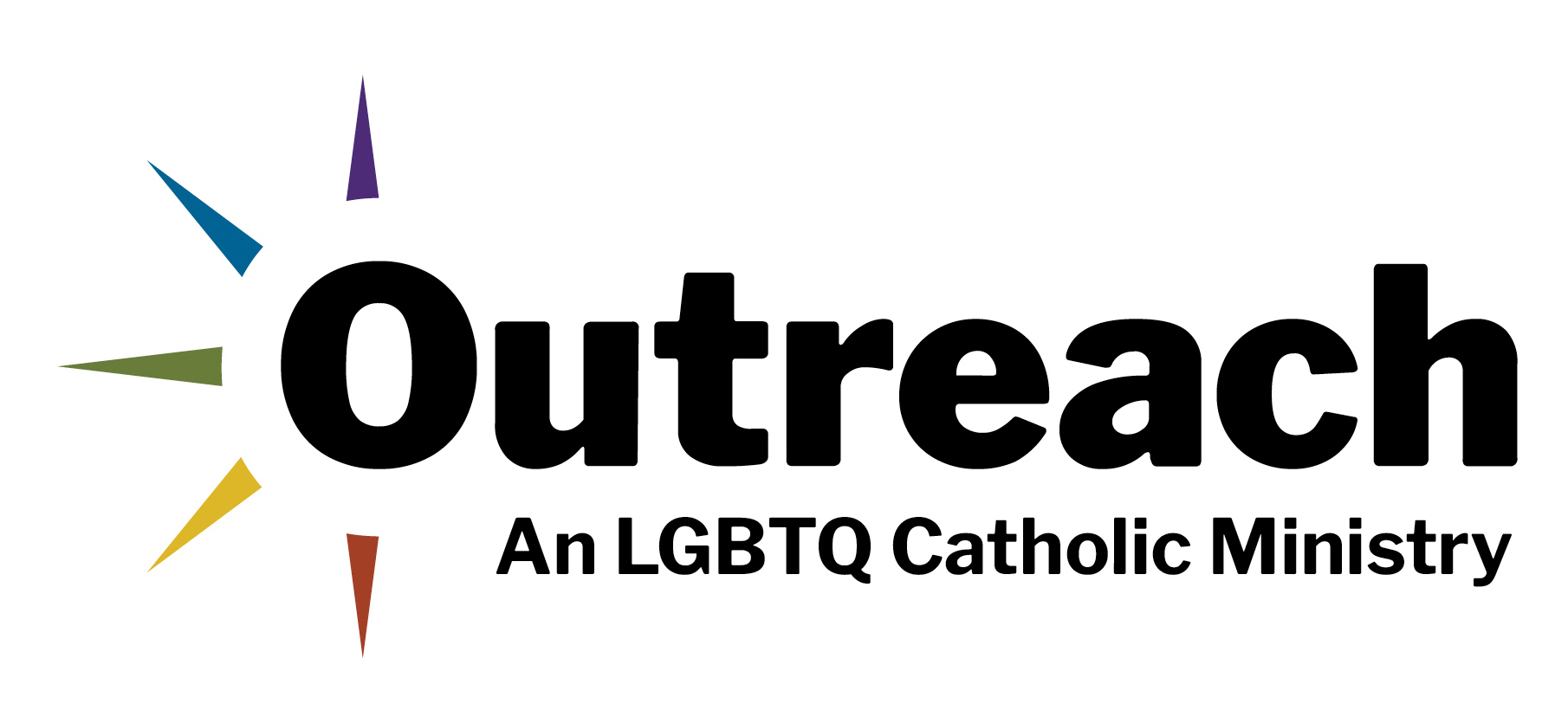For the past ten years, I have been blessed to minister to LGBTQ+ persons in Catholic high schools. Though challenging at times, my life and work as an educator has been significantly enriched by the gifts LGBTQ+ people bring to our schools and broader Church. For that reason, I long to see Catholic school environments where LGBTQ+ persons can safely and authentically explore their identity as they grow in relationship God through community.
This ministry is needed! Fr. James Martin, SJ, recently complied some alarming statistics concerning LGBTQ+ youth. Most notably, 40% of LGBTQ+ youth have reported seriously considering suicide, one in three reported experiencing physical harm or threat due to their identity, and 63% of LGBTQ+ people who have left the Church left due to its teachings and treatment of LGBTQ+ issues.
For this reason, I categorize the work of LGBTQ+ inclusion in Catholic schools as a pro-life issue and as a pastoral crisis. Fr. Jim also emphasized one important statistic, which brings me hope: The risk of suicide decreases by 40% when the LGBTQ+ youth encounters at least one supportive adult in their community. I believe Catholic school educators are called to be that support.
The ministry is often uncertain because there is little research on LGBTQ+ inclusion in Catholic schools. Those of us who work on LGBTQ+ inclusion in schools are “inventing the wheel” and making use of resources from Catholic and non-Catholic sectors as best as we can. Fortunately, the launch of the new LGTBQ+ ministry, Outreach, provides us educators a comprehensive, well-curated array of tools to carry out this ministry effectively. To supplement these efforts, I am sharing some important insights, or “good practices,” to consider when utilizing ministering to LGBTQ+ people in Catholic schools. These insights, or recommendations, come from my research as well as experience working with different high schools and religious organizations throughout the nation.
Important considerations for LGBTQ+ inclusion in Catholic schools
Adopt an attitude of proactivity. You have LGBTQ+ students in your school! You do not have to wait for students to come out, demand inclusion, or engage in conflict in order to reactively provide them the pastoral care they need. Instead, I recommend that Catholic school employees act proactively by educating themselves (perhaps using the resources provided by the Outreach ministry) and collaborating with each other to create an implement a plan for school-wide LGBTQ+ inclusion. Proactivity is key and will likely help put out many fires before they even come up.
This LGBTQ+ inclusion plan should contain guidelines for school-wide policy as well as classroom management. Questions of student uniform, gendered bathrooms, prom dates, and chosen names/pronouns should be discussed thoroughly and guidelines should be communicated to all employees prior to the start of a school year. Furthermore, classroom teachers might benefit from some school-wide guidance on verbal cues (common use of language, cultural competence, etc.), visual resources (such as safe-space stickers, pride flags, etc.), and classroom management considerations (such as anti-bullying prevention, pronoun use, microaggressions, etc.) pertaining to LGBTQ+ inclusion.
After implementation, these policies should be constantly revisited to ensure they are upholding the dignity of all members of the community, and especially the vulnerable LGBTQ+ population. It is ok to make mistakes, revisit policies, and revise accordingly.
Ground yourself in the Catholic mission of your school and its charism. A clear articulation of how the mission of the school applies to LGBTQ+ students should guide school policy on LGBTQ+ inclusion. For schools founded, sponsored, or inspired by religious orders, the order’s charism often contains declarations on human dignity and inclusion. For example, some religious orders have already drafted charism statements and resources that are specific to LGBTQ+ inclusion: the Marianists Province of the United States produced a video and a resource for educators; and the De La Salle Christian Brothers District of Eastern North America issued a statement. Catholic school educators would be wise to ground their policy in these traditions, which are in continuity with our broader Catholic faith. These well-articulated statements provide educators with a common mission-driven language for LGBTQ+ ministry.
Catholic doctrine on gender and sexual orientation must form an integral part of the school’s dialogue on LGBTQ+ inclusion. At the same time, it should be placed in the broader context of the Catholic tradition. Catholic sexual ethics, like all of Catholic morality, is ultimately discerned by the human conscience in relationship with the Church; and high school teenagers, who are considered to be above the age of reason, can certainly carry out this discernment in community. As Pope Francis wrote in Amoris Laetitia: “We [the Church] have been called to form consciences, not replace them.” Therefore, educators must take great care not to rigidly indoctrinate students, but rather guide them in the process of conscience formation through communal dialogue.
Establish a safe space for LGBTQ+ students to explore their identity. In my work and ministry, I have seen a variety of formats for LGBTQ+ safe-space affinity clubs. These range from (a) general diversity clubs that addresses LGBTQ+ issues among other matters of diversity to (b) LGBTQ+-specific affinity clubs. Some schools even have unofficial or “underground” clubs that have not been approved by the school administration. The variation is mostly caused by elements of ignorance, fear, politics, or diocesan prohibitions on such student organizations. While public school research indicates that LGBTQ+ affinity spaces (such as gay-straight alliance [GSA] clubs) provide significant benefits for LGBTQ+ students, each school has to find creative ways to provide these students opportunities for self-exploration. Furthermore, administrators must support and promote innovative and prophetic ways to establish these safe spaces at school.
It is also important to note that such opportunities are not limited to GSA-type clubs. Individual teachers can establish these safe spaces in their classrooms through one-on-one pastoral care, relationship-building, classroom environment, and representation in the curriculum. Having safe-space stickers in the classroom, while it may seem insignificant, can be an important indicator to LGBTQ+ students that they are allowed to approach this teacher about their identity. Furthermore, including LGBTQ+ stories and voices in the course curriculum serves to validate the presence and contributions of LGBTQ+ people in our world and in our Church. This will teach LGBTQ+ students an important lesson: while they may not see it now, their LGBTQ+ identity is a beautiful gift that will serve them, their community, and the Church.
Model Synodal Communal Dialogue. Pope Francis is guiding our Church on a synodal way. Briefly, I would describe synodality as an ecclesiological model of Church that fosters collaboration among the lay faithful and Catholic leaders as the community walks together as the People of God. This model acknowledges that the Holy Spirit is active and present in the lives of all the Baptized faithful and, through communal dialogue, we are to discern where the Spirit is guiding the Church. This means that the very lives of the faithful, including LGBTQ+ Catholics, may serve as avenues for God’s revelation to the Church. With this in mind, Catholic school communities should establish a culture of open dialogue and communal discernment on matters of LGTBQ+ inclusion. More importantly, Catholic schools should be open to being shaped by the lives and gifts of LGBTQ+ students, employees, and parents.
To foster this communal dialogue, some school administrators have provided employees and school leaders with workshops and professional development opportunities (some of which I have facilitated), facilitated town-halls with students, investigated how they can retain and protect LGBTQ+ employees, and crafted important communications to families about the school’s policies on LGBTQ+ inclusion. These efforts can take place before crafting a policy for LGBTQ+ inclusion and/or as a way to evaluate its effectiveness after implementation. What is important is that all of these efforts engage the entire community in a discernment process on what it means to live out the school’s Catholic faith toward LGBTQ+ students.
Practice Prudence, Courage, and Hope. I am often contacted by individual educators seeking advice on how to promote dialogue on LGBTQ+ inclusion in their Catholic school that is hostile to these conversations. My advice to them is to find the point or points of tension and apply gentle pressure by asking questions and taking calculated risks. These educators should be prudent. That is to say, they should be effective catalysts for a gentle cultural shift but also, to the best of their ability and while maintaining integrity, should take great care not to cross a line that might get them fired. Sometimes this means educators must find another creative way to exercise LGBTQ+ ministry and sometimes it means they have to take “no” for an answer from an administrator at the moment and use that moment as an opportunity to build a trusting relationship with the administrator. Remember, LGBTQ+ students who come across one supportive adult will be less likely to contemplate suicide or other forms of self-harm. Those educators may be that one adult to an LGBTQ+ child that needs them.
That said, courage is also necessary on order to apply pressure and take calculated risks. I often remind educators that, while Christ promised us the joy of everlasting life if we follow Him, comfort and safety in this life were never part of the deal. I acknowledge the risk of this ministry and the fear that comes along with it. I personally have experienced it numerous times. But this brings me to my favorite virtue, which guides my courage: hope.
LGBTQ+ ministry in Catholic schools (and anywhere in the Church) relies on hope. In the words often attributed to St. Oscar Romero, “We are workers, not master builders… We are prophets of a future not our own.”
This means that those of us who minister to LGBTQ+ people trust that God is ultimately the architect of our work and will guide our work wherever it needs to go. This hope is not a foolish hope: We have already witnessed several small-yet-significant shifts in Church’s treatment of LGBTQ+ people in recent years. It is up to all of us to remember that we are living bricks in this Church and serve as agents of this transformation.
Guided by hope, courage, and prudence, I believe Catholic school educators can touch the hearts of LGBTQ+ students and uplift their dignity as beautiful people created in the image and likeness of God.




